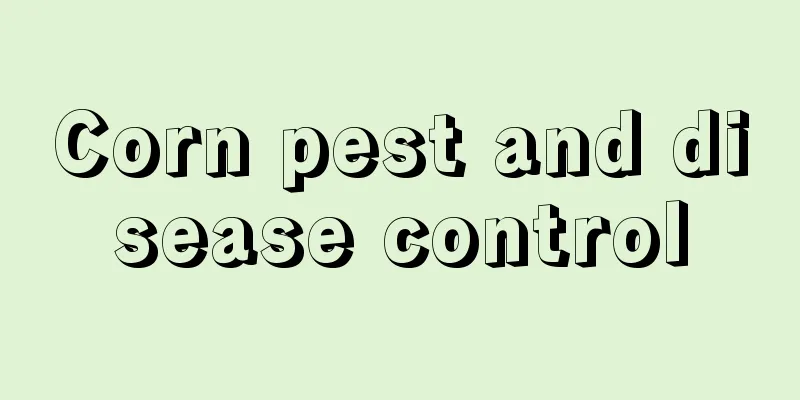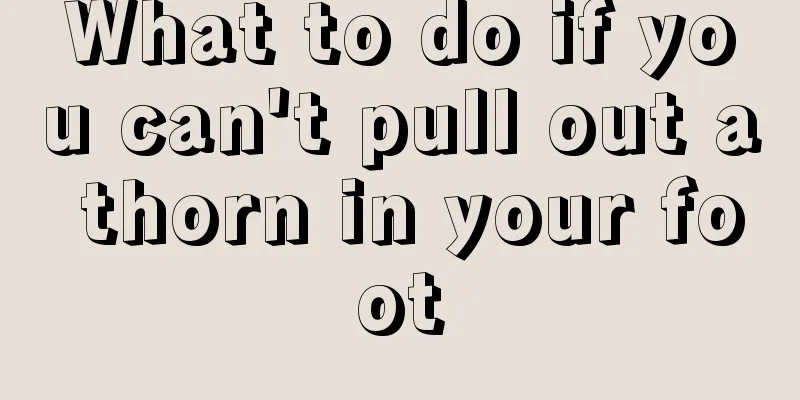Corn pest and disease control

|
Corn is the most common crop in rural Northeast China. Almost every household in rural Northeast China has a corn field. Corn is a good thing. It is rich in nutrients and since it is a coarse grain, eating more corn will not make you fat. Moreover, corn can replace staple foods that make you fat and play a certain role in weight loss. Corn can also be used to make corn oil. It can be said that corn has many benefits. It can not only be eaten directly but also processed. Although corn is loved by people, its growth is not so smooth. Anyone who has grown corn knows that corn often suffers from diseases and pests. Once corn is attacked by diseases and pests, it will affect the growth of the corn and the corn harvest in autumn. So let’s talk about how to prevent and control corn diseases and pests today. Corn leaf blight: Generally, the amount of rainfall in July is positively correlated with the severity of corn leaf blight. When the diseased plant rate reaches 70%, the diseased leaf rate begins to develop from bottom to top; the earlier the rainfall, the earlier the diseased plant rate rises; otherwise, it will be late. When the diseased plant rate is 70% and the diseased leaf rate is 20%, an outbreak will occur in about 15 days after moderate to heavy rain. When the diseased plant rate reaches 100% and the diseased leaf rate reaches 30%, and there is continuous rainy weather, prevention and control measures must be taken. First, remove 1-2 diseased leaves at the bottom of the corn and destroy them together; spray 500 times diluted 50% carbendazim or 70% thiophanate, or 800 times diluted mancozeb, etc. Corn leaf blight: Select the main local varieties and corn fields with good growth, take samples at five points, and check the number of diseased plants, the number of leaves per plant, and the severity at each point. Generally, when the diseased plant rate reaches 100% and the diseased leaf rate reaches 30%, prevention and control can be carried out if there is rainfall. 12% green copper milk etc. can be sprayed. Corn round spot disease: Choose disease-resistant varieties, take samples at five points, check 10 plants at each point, and examine the diseased plant rate and the number of diseased leaves per plant. Generally, pesticides are sprayed during the peak period of fruit ear formation and silking, using 500-800 times diluted 25% triadimefon. Corn smut: If the tumor is found, it should be removed promptly. Corn virus disease: There are corn stunt and dwarf mosaic disease (mosaic stripe disease). The virus is transmitted by gray leafhoppers and aphids. The number of gray leafhoppers and aphids in the field is closely related to the number of weeds in the field. The number of gray leafhoppers and aphids carrying the virus is related to the severity of wheat bush dwarf disease. Therefore, the extent of corn virus disease can be judged based on the extent of wheat bush dwarf disease. The main focus of prevention and control is to eliminate weeds and control insects to prevent serious occurrence of corn virus diseases. During field investigations, if suspected diseased plants are found, they should be removed immediately and sprayed with disinfectants for control, such as 5% fungicide. Corn borer: Pay attention to the hatching difference of eggs in the field and the damage caused by larvae, and seize the critical period to spread granular agents to control the first generation of corn borer. Bt emulsion can be made into granules or Beauveria bassiana granules can be spread into the corn horn to kill newly hatched larvae. Corn moth: The main pest in corn fields is the red-margined moth. In late July, we began to investigate the number of eggs and larvae on 100 plants. When we found 2 clusters of eggs on 500 corn plants, or more than 15% of the ears had been bitten, we immediately started prevention and control. The newly hatched larvae of the moth have the habit of causing damage in a concentrated manner. There are more larvae after the corn has silked, so we can organize manual catching of the insects or spray pesticides for control. Once you understand how to do it, you can effectively prevent and control corn diseases and pests. Without the invasion of pests, people can eat delicious corn in autumn. Many people think that sweet corn will make you fat. Here I want to say that corn not only does not make you fat, but because it can give people a feeling of fullness, corn can be used to replace staple foods such as rice that make you fat. Corn also has the effect of lowering blood sugar. |
>>: Cactus radiation protection
Recommend
How to excrete melanin from the body?
Melanin is a biological pigment that is formed th...
What is the reason for belly fat
The belly is a place where fat easily accumulates...
The difference between Coprinus comatus and Pleurotus eryngii can be divided into three aspects
What is the difference between Coprinus comatus a...
How to wash off rust on clothes
Ironware is very common in our lives because iron...
What are the factors that may be related to rectal cancer?
In life, rectal cancer has affected the normal li...
Can I eat chicken if I have chickenpox
We all know that chickenpox is a disease that req...
How to get a nose stud
I don't know if you have seen women with nose...
Nutritional value of young cicada monkey
Young cicada monkeys usually live in temperate, s...
Why do my feet get sore in the summer
Summer is a season that many people dislike. The ...
What are the benefits of soaking your feet in salt water frequently?
We all like to soak our feet in the evening, whic...
What's wrong with calf cramps
Almost everyone has experienced calf cramps. Some...
There are little red spots on my arms
Human skin is naturally flawless, but with the pa...
How should we care for acute mental disorders?
The pathogenesis of this disease is still not ver...
What are the symptoms of liver cancer metastasis to the lungs? These three symptoms appear
After liver cancer metastasizes to the lungs, sym...
How can I make my hair straight?
Affected by genetic factors, everyone's hair ...









